A Peek into Daily Life at Heijokyu Through Picture Scrolls
A Peek into Daily Life at Heijokyu Through Picture Scrolls
The central government offices of Nara Palace were composed of nikan (two agencies) and hassho (eight ministries), and various other offices belonging to each, and around 7,000 officials are estimated to have worked there. Let us have a look at who these people were, where they worked, and what kind of work they did.
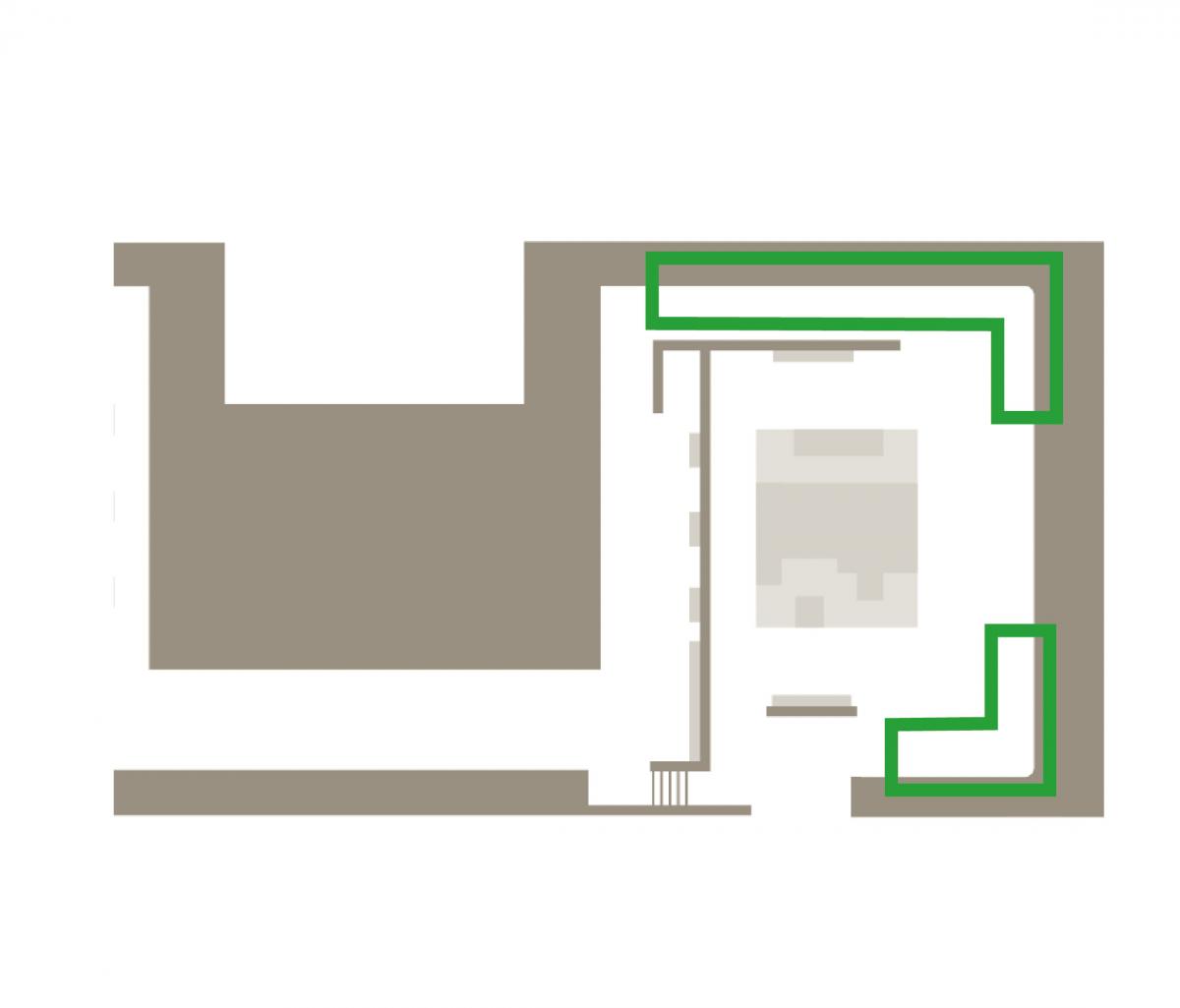
■ a. The Imperial Guards that Protected Suzaku-mon Gate (South Central Gate)
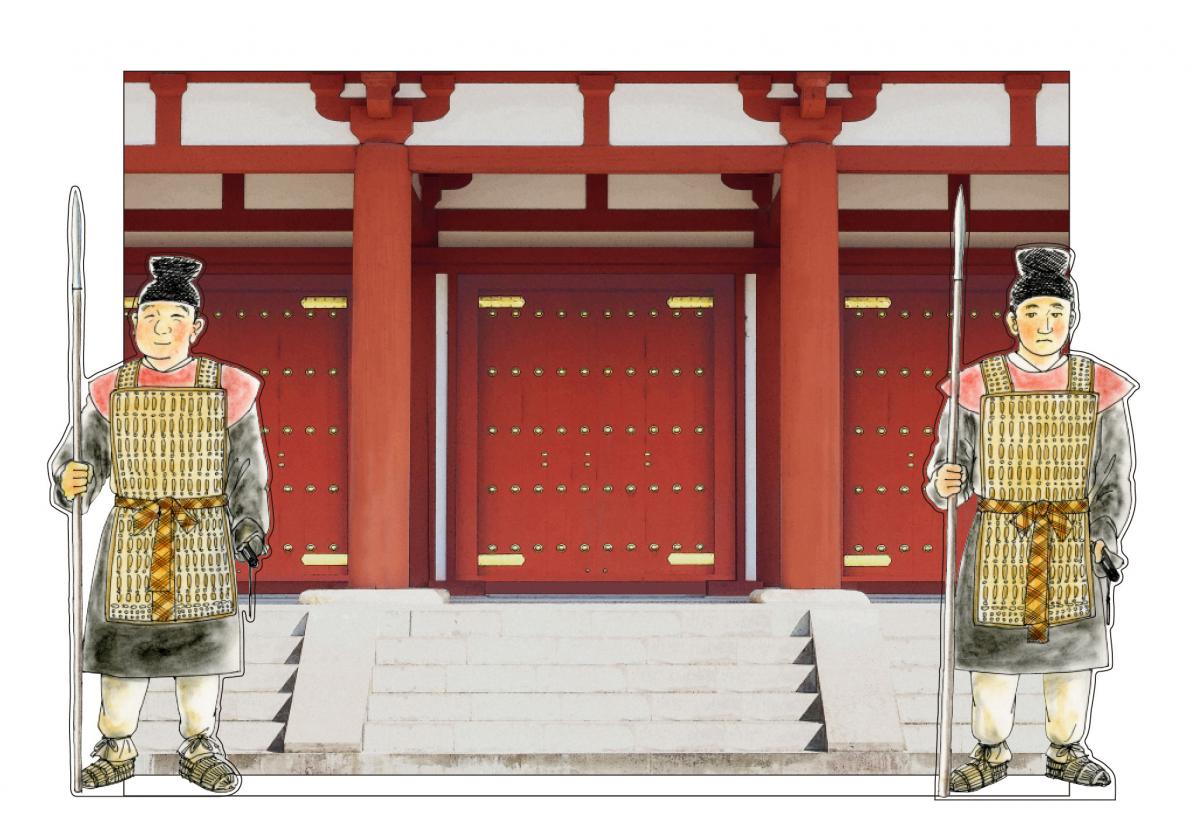
Suzaku-mon Gate was the main gate of Nara Palace and was only opened on special occasions, meaning officials on their way to work would only enter through the gates on both sides. The 12 outer gates of the palace were protected throughout the night by Imperial Guards, and opened approximately 20 minutes before sunrise.
■ b.The Officials that Cared for the Horses at the Meryo (Stables)
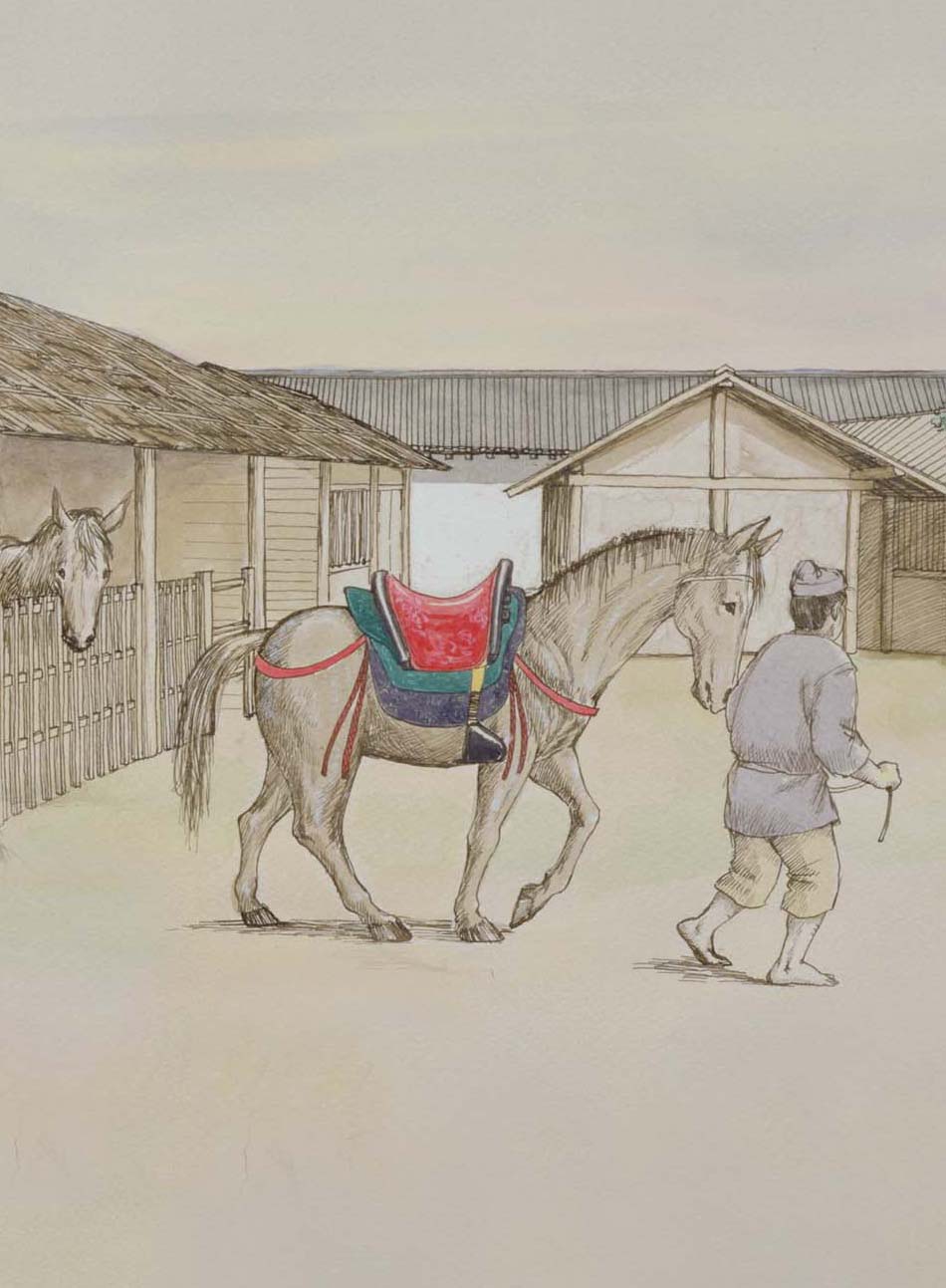
The meryo on the left had two veterinarians, 60 horse caretakers and others for a total of around 90 staff, all supervised by a fourth rank military official. The stable on the right was of similar scale, meaning that more than 180 officials worked at the meryo alone.
■ c.Kisha (Horseback Archery) at the Chodo-in (State Halls Compound)
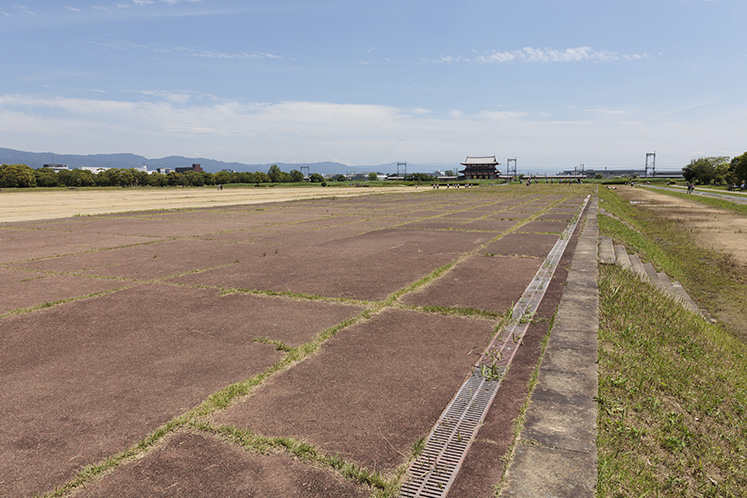
Kisha was the art of shooting arrows from horseback while in full speed gallop. It was held every year on days such as Boys’ Day (May 5) and all officials participated. It is said to be the origin of yabusame, a later form of Japanese archery.
■ d. Preparing Meals for Officials at the Daizenshiki (The Bureau of Imperial Cuisine)
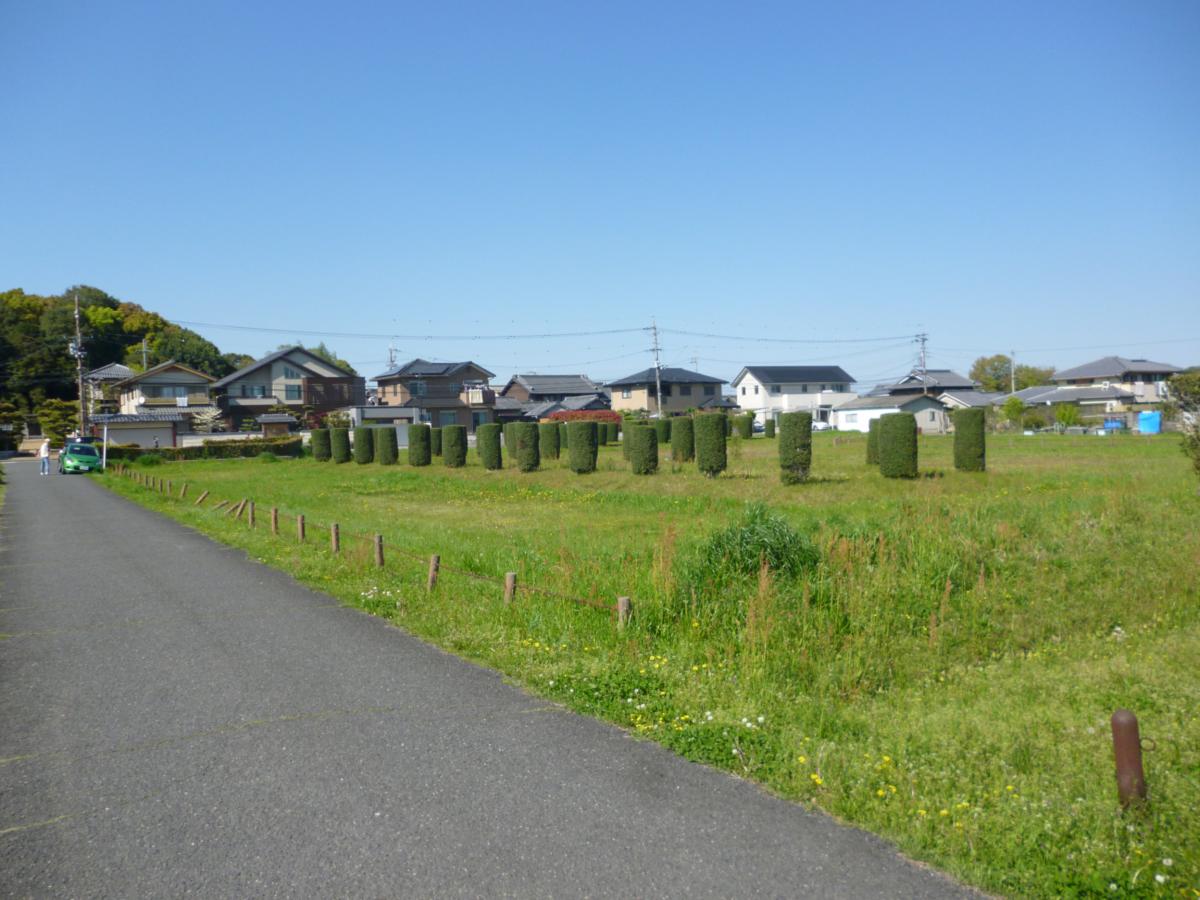
The Daizenshiki was directly supervised by the Ministry of the Imperial Household, and more than 160 lower ranked officials worked there under a director. In addition to preparing meals, they also managed food supplies paid as tax, and handled provision of necessary foods and food processing.
■ e. The Officials that Made Rice Wines and Vinegars
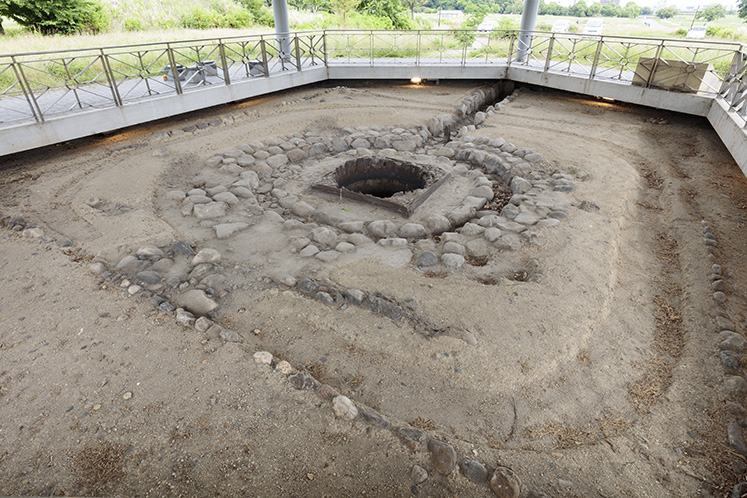
The grounds of the Zoshushi were originally a valley with ample access to spring water—perfect for brewing sake. Managing water was especially important and in particular, wooden water pipes were used to draw water from the wells.
■ f. Official Notices Issued by Mokkan (Wooden Tablet) at the Kunaisho (Ministry of the Imperial Household)
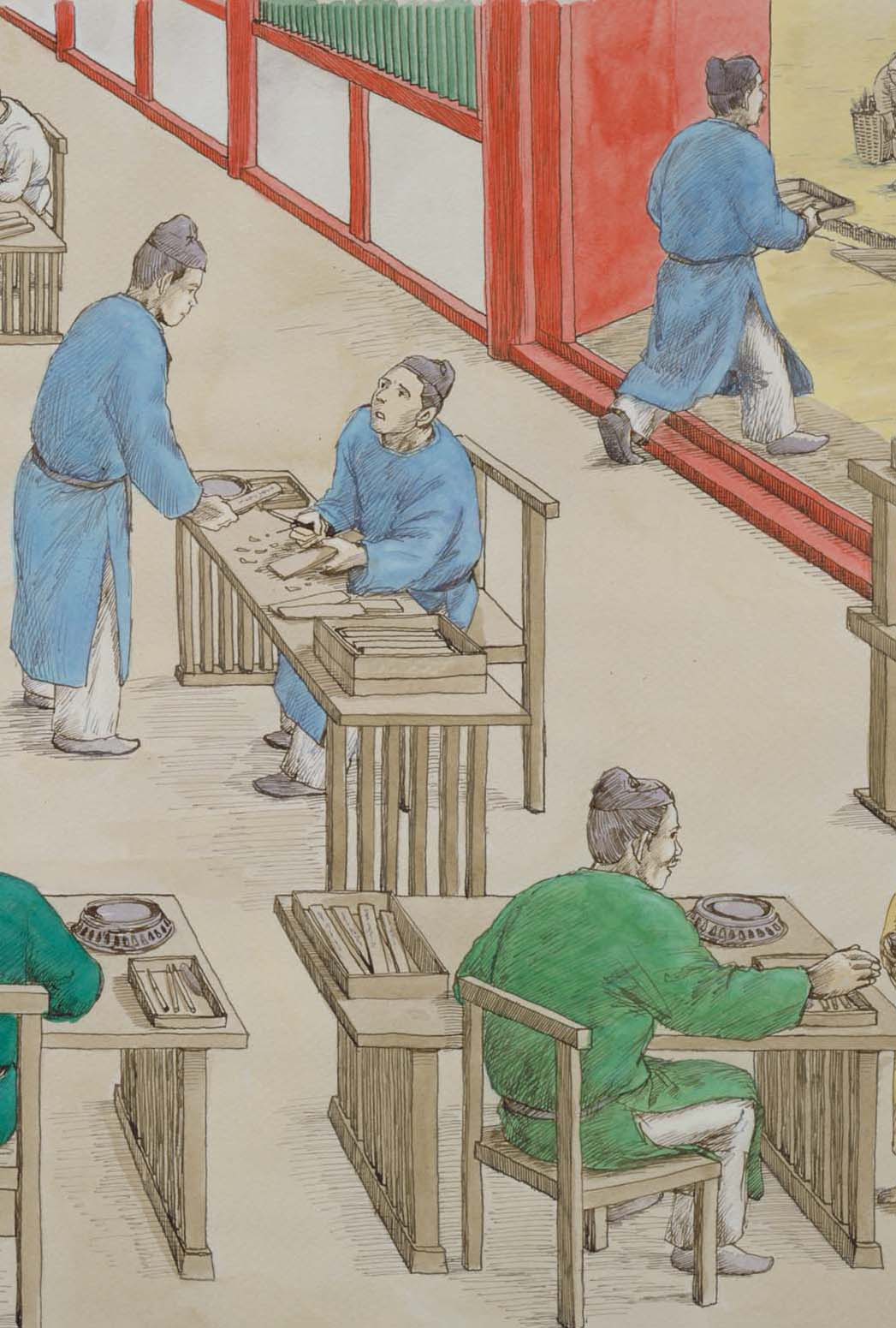
Administrative documents at Nara Palace were strictly governed by the country’s laws and regulations, and as well as paper, mokkan, or wooden tablets, were often used. Even in those days overtime was commonplace, and many stayed behind after the drum that signaled the end of the work day around noon.
■ g.The Female Officials of the Dairi (Imperial Palace)
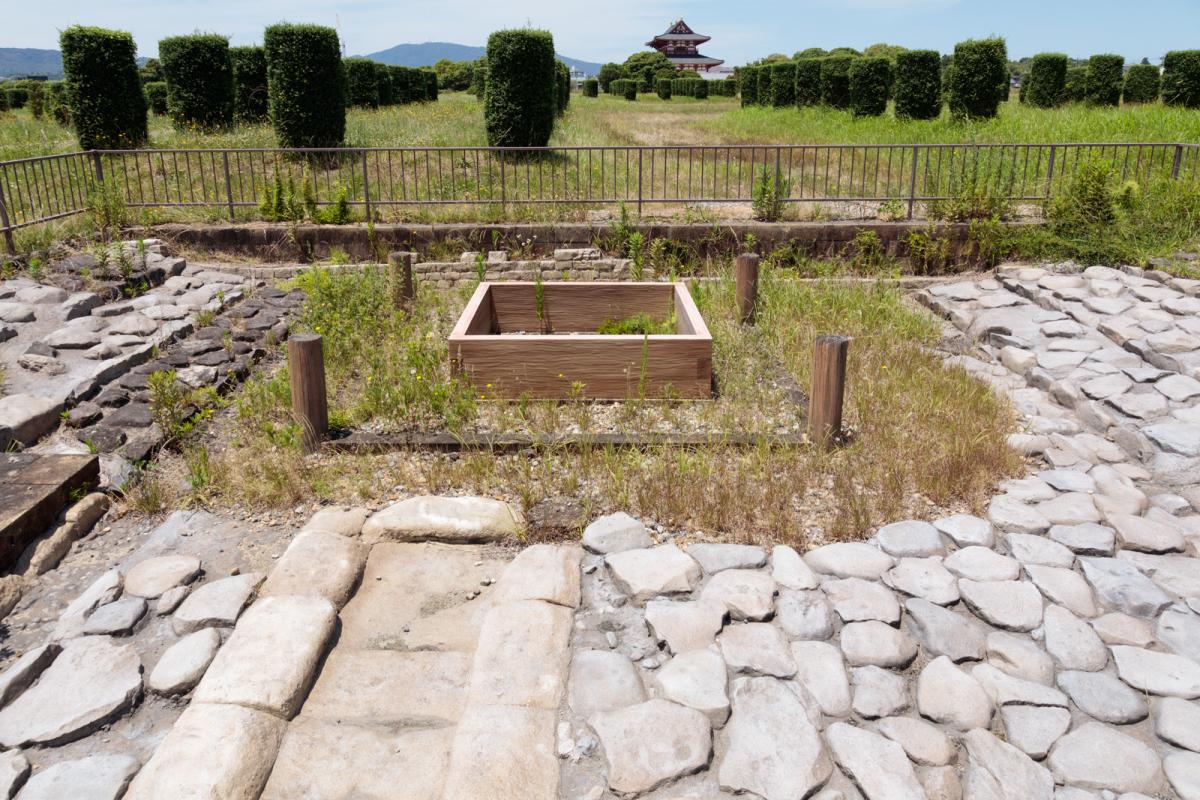
In the Imperial Palace, approximately 300 women worked in the Kokyu Inner Palace, and their tasks were important. They were the conduit through which business was presented before the Emperor, they were the official keepers of keys, and they took care of cooking and sewing, fulfilling a variety of jobs.
■ h. The Emperor’s Life Inside the Dairi (Imperial Palace)
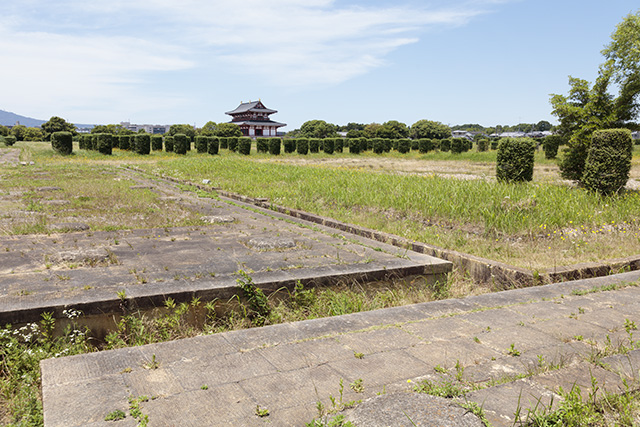
The Emperor spent most of his days within the palace confines, where he performed his political and ceremonial tasks. He invited aristocrats over for banquets, and enjoyed games such as Go and board games. Shoso-in still contains many of the furnishings, ceremonial objects, instruments and things the Emperor used for amusement.
